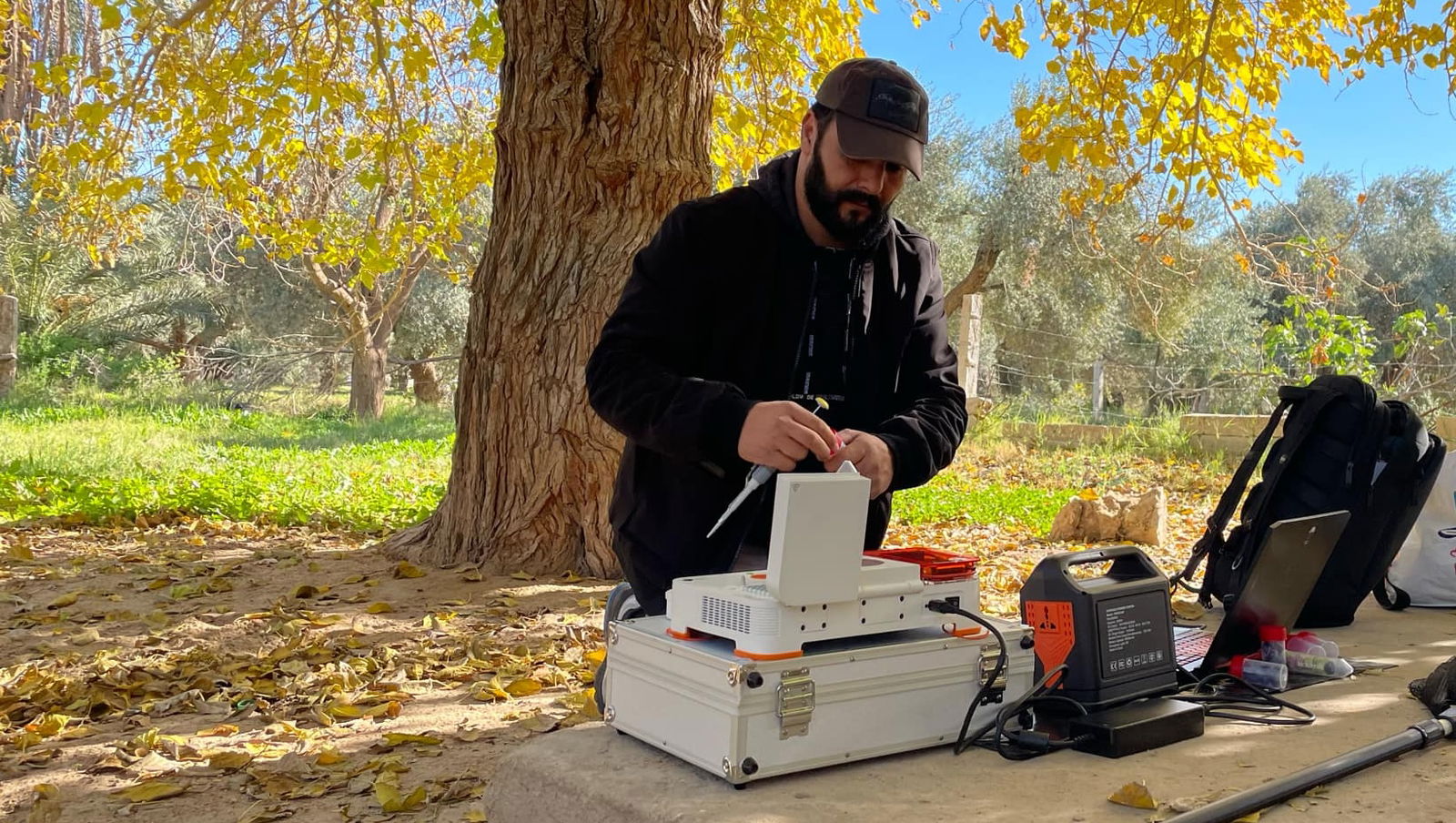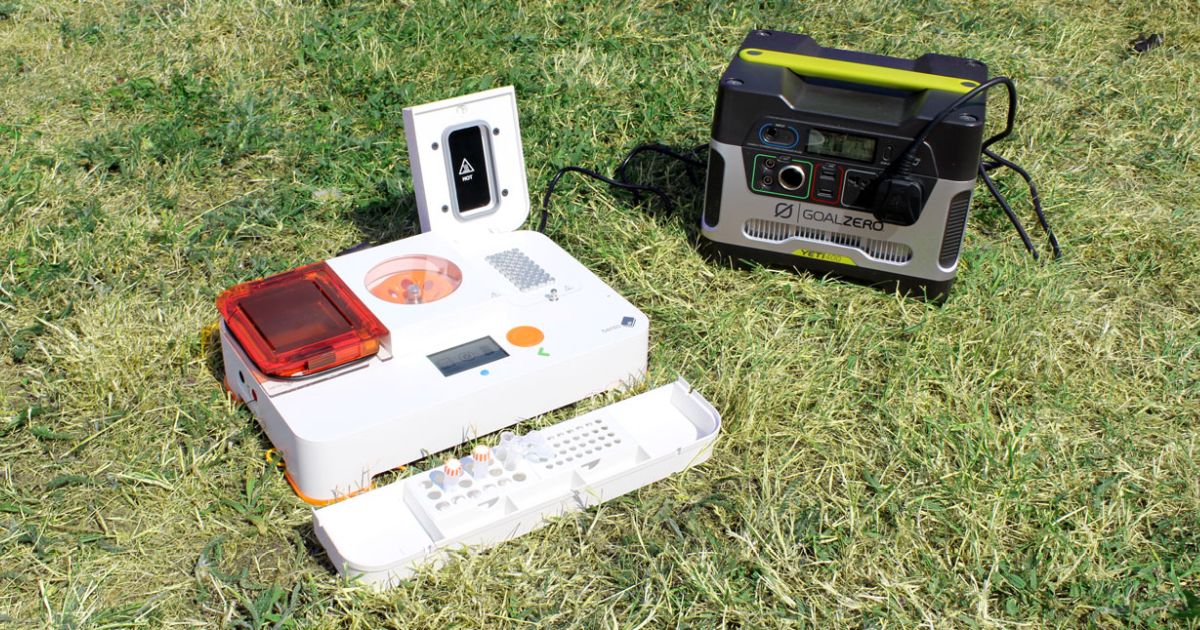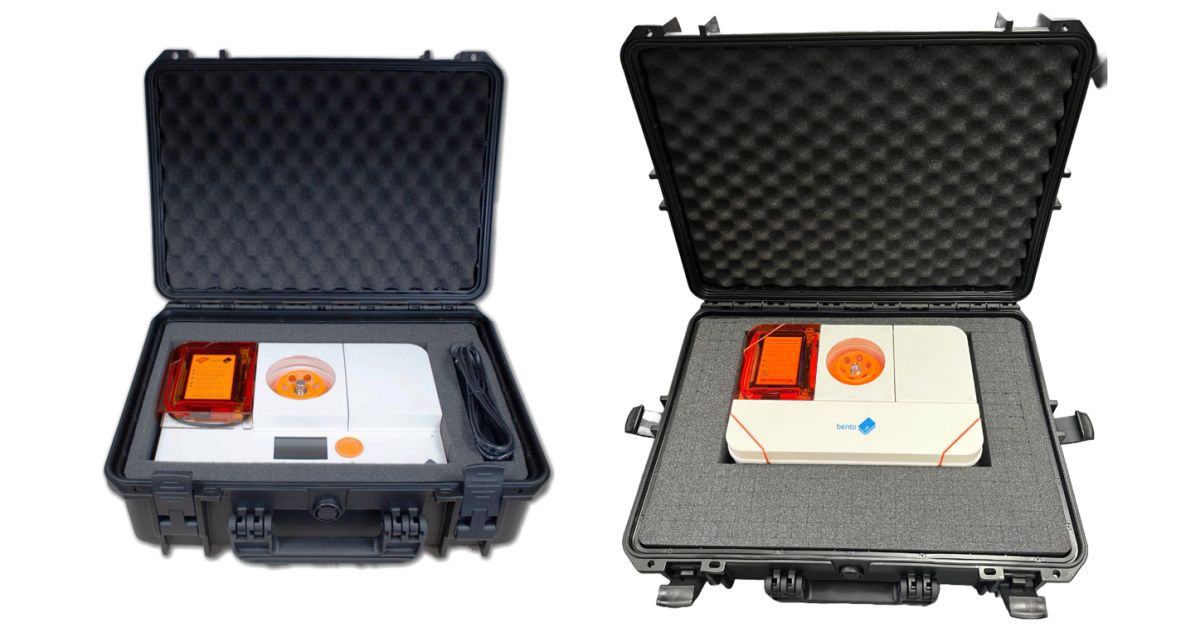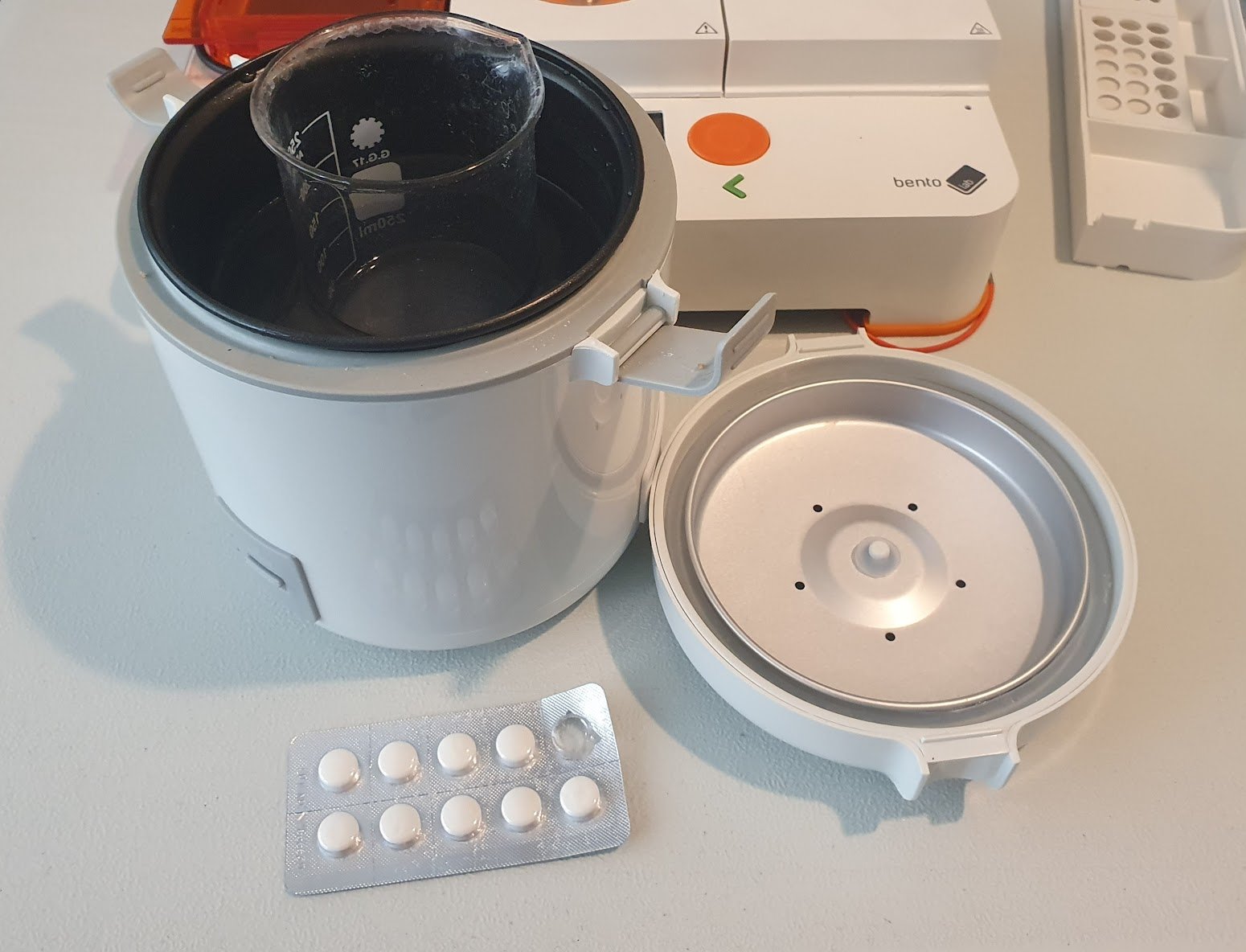If you’re considering working outside of a laboratory environment with Bento Lab, what do you need to do to make it a success?
In this article, we examine some key considerations for setting up a temporary or portable lab with Bento Lab.
1. Setting up a working space
Wherever you plan on setting up a temporary or portable lab, the first thing that you’ll need is to find a space to work.
For a minimal setup, you could use a “pack out/pack away” approach for each step of the workflow, so only part of your equipment is out at any given time. Alternatively, if you have more space, you might want to set out all the equipment needed for the complete workflow before you start.
If you are working indoors, you could use any suitable table or bench, for example in a field station, museum, community centre, or home setting.
Outdoors, you might only need a small flat, level, and stable surface, for example on board a diving vessel, a picnic bench beside a lake, a wall on a mountainous field site, or a table at a tropical research station. But be careful of bad weather — a tent might be a useful precaution for outdoor fieldwork.
To set up a clean working surface, you could use bleachable plastic trays, a thick plastic tablecloth, or lay out clean aluminium foil or paper towels.
You can read more about the kinds of temporary labs that researchers are setting up using Bento Lab here.

2. Power supply
Wherever you’re working, you will need some kind of power supply to power your Bento lab.
Bento Lab has a universal power adaptor. This means that it is compatible with any mains power supply around the world, but you may need to use a travel adaptor plug to adapt to local plug socket types.
If you’re setting up a temporary lab space in a building with plug sockets, taking a long extension cord will give you more options for where you want to set up your Bento Lab and other equipment.
If you want to go completely off-grid, you can also power Bento Lab using an appropriate portable power station or generator.
You can read more about using Bento Lab with a battery or portable power station here.

3. Packing and storing your equipment
Make your research on the road easier by being very organised about how you pack and store your equipment and reagents.
- Consider using a carrying case to protect your Bento Lab. With a 20 L case you can protect your Bento Lab and a few reagents. With a 34 L case you can also pack a layer of pipettes, pipette tips, tubes, and reagents.
- Plastic storage boxes can also be very useful for organisation. For example, you can fit Bento Lab and enough equipment, reagents, and plastics for a workshop, into two 9 L storage boxes (39.5 x 25.5 x 15.5 cm).
- When packing, make sure everything is well-organised, individually bagged, and clearly labelled. This will mean that you know exactly where everything is, and you can easily tick items off against a checklist to make sure you have what you need.
- To minimise the risks of cross-contamination, make sure that you store pre-PCR equipment and reagents separately to anything used in post-PCR steps.
- Don’t forget that you will need to dispose of any lab wastes, for example gloves, kitchen roll, used tips and sharps, used gels, and used TBE buffer.

4. Do you need a microwave for casting agarose gels?
If you are using Bento Lab outside of a laboratory environment, then you might not have access to a microwave oven for melting and casting agarose gels to analyse your results using agarose gel electrophoresis.
Fortunately, there are a few approaches that you could use to avoid taking a microwave with you.
- Use a small rice cooker or camping stove to melt agarose for gels
- Pre-cast your own gels and store them for later use
- Try running E-Gels using Bento Lab to power and visualise the gels.
You read more about these options here.

5. Precautions against contamination
Sample and PCR contamination is always a concern with any molecular biology application. But if you take precautions, and maintain a good sense of labwork hygiene, then you should be able to minimise contamination risks even when working in improvised or portable labs.
For some basic advice on minimising the risks of contamination, check out our article “10 essential tips to avoid DNA contamination”, and its accompanying video below.
If you need more advanced measures against environmental contamination, for example, for microbial metabarcoding or metagenomics, you could also consider working in a sterile dead air box, or a clean-room-like tent environment.
6. Be aware of how ambient temperatures might affect your workflows
If you’re working outside of a conventional laboratory, you could be working in a wide range of different operating temperatures. And if you’re on the move, it may be inconvenient to have a fridge, freezer, or ice packs to protect samples, PCR reagents, and DNA extracts.
With Bento Lab, you should be able to work in a wide range of environmental conditions provided they are not too extreme: Bento Lab is rated for usage within a temperature range of 10°C to 35°C, in a maximum relative humidity of 80%, and is safe for use at ambient temperatures up to 40°C.
- For working without a cold chain, you could consider using our room-temperature stable reagents, which are stable after shipping for at least 30 days if unopened.
- You could also consider using lyophilized PCR beads, although these can be substantially more expensive per sample.
- Primers stored in low EDTA-TE buffer can be very stable at ambient temperatures (see this study) provided they remain uncontaminated.
Also consider using a hot-start PCR master mix, such as HOT FIREPol Master Mix, to reduce the risk of non-specific amplification when setting up PCRs at room temperature.
7. Be prepared in case things go wrong
If you’re investing significant time and money in working outside of the lab, it can be a good idea to plan for all contingencies, for example:
- Run through your workflow in advance in a safe environment to make sure that your equipment and protocols are working satisfactorily
- Be sure to update your Bento Lab’s firmware for improved performance, especially if you have an older unit
- Read through Bento Lab’s operating manual, and make sure you are confident with its operation
- Plan what you’ll need to take for your workflow carefully to make sure that you don’t run out of reagents or plastics
- Consider taking a separate set of reagents and lab plastics in case any become spilled, lost, or contaminated while outside of the lab
- Take a spare set of gel box electrodes in case of accidental breakages
- For high-cost or larger budget research projects, doubling up on essential equipment (for example a second Bento Lab, spare gel box, or pipettes) can increase capacity and also provide an extra layer of redundancy against issues in the field.
8. Health and Safety
Most Bento Lab workflows use generally safe equipment, reagents, and protocols. But it is always a good idea to assess the risks present in your workflow, and if you’re working within an institution or company then your employers will probably require you to conduct a formal health and safety risk assessment.
Risk assessments will vary depending on the workflow and are outside the scope of this article, but in general it is a good idea to:
- Familiarise yourself with the safety advice for Bento Lab and Safety Data Sheets for any reagents that you will be using in your lab setup
- Keep all equipment, reagents, and plastics secure and out of the reach of children and animals
- Use gloves for all lab work (to protect yourself and to avoid cross-contamination), and wear eye protection when necessary
- Be careful of sharps, molten agarose, DNA stain, and any chemicals you may be using, including any diluted bleach used for equipment decontamination
- Know how you are going to dispose of your lab wastes, or how you’ll carry them out with you if you can’t dispose of them on-site.
If you have any questions, please get in touch!
Please let us know what other resources, advice, and tips and tricks for using Bento Lab that you would like us to produce in the future!
Looking for advice on using Bento Lab?
Book a free consultation or ask a question.